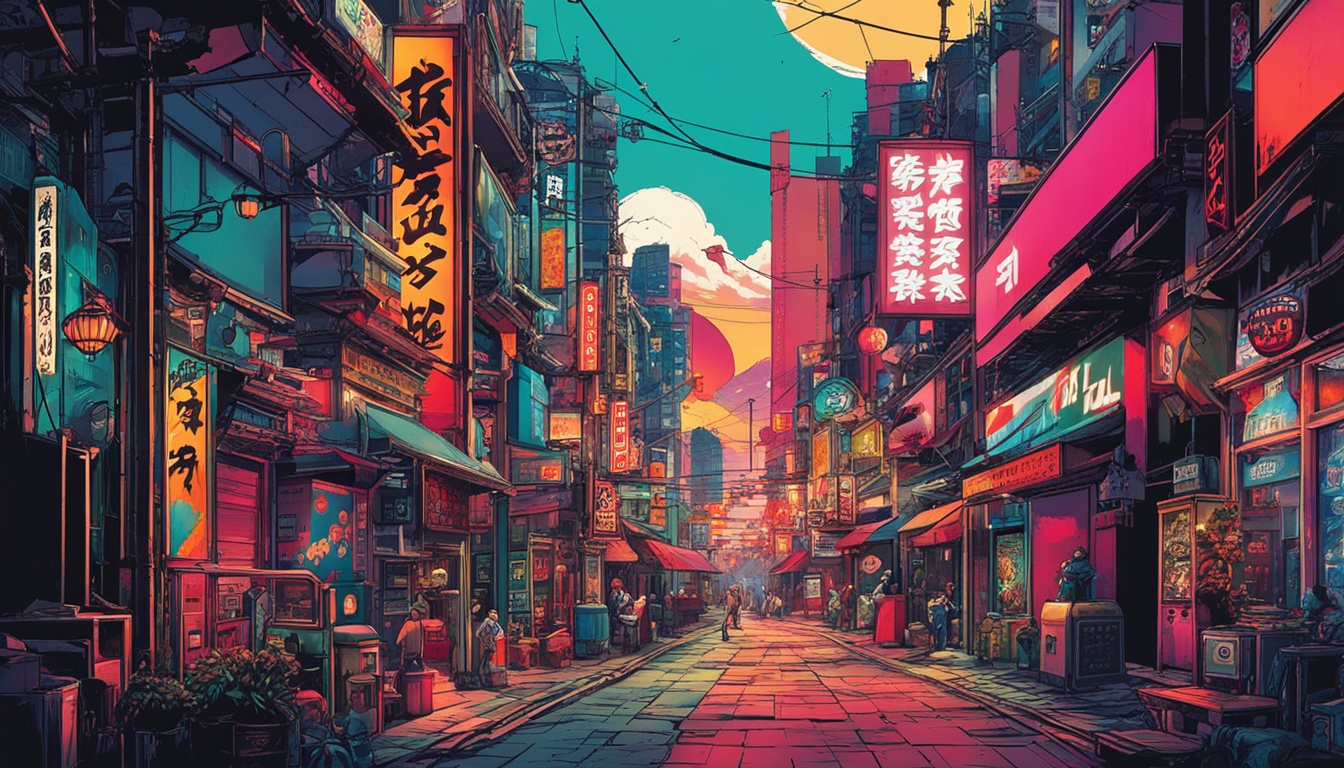Did you know that video game soundtracks are making it big lately? Live concerts of game music are happening around the globe. These events often feature classic tracks being played live. Many famous games with memorable soundtracks come from Japan. This country has a deep love for gaming and a special skill in making music that fits games perfectly.
Key Takeaways:
- Koji Kondo’s compositions for the Super Mario series and The Legend Of Zelda series are considered some of the best in video game history.
- Yuzo Koshiro, known as ‘The Genius of FM Synth’, changed video game music with The Revenge of Shinobi, Streets Of Rage, and Actraiser.
- Nobuo Uematsu’s compositions for the Final Fantasy series and Chrono Trigger are highly praised and known worldwide.
- Takashi Tateishi’s work on Mega Man 2 and other games shows his skill in making music that sticks with you.
- Akira Yamaoka’s music for the Silent Hill series is creepy yet memorable, leaving a strong memory for players.
- Yoko Shimomura’s music for Street Fighter II and Kingdom Hearts has become a big part of these game series.
- Hirokazu “Hip” Tanaka’s tunes for games like Balloon Fight and Metroid made him a true chiptune music trailblazer.
- Junichi Masuda’s music for the Pokemon series is now legendary, capturing the unique feel of the Pokemon world.
- Hiroshi Kawaguchi is known for his vibrant and catchy tunes in games like Out Run and Space Harrier.
- Masafumi Takada, through games like Killer7 and No More Heroes, has proven his diverse and atmospheric soundtrack creation.
- Masato Nakamura’s theme for Sonic The Hedgehog is an enduring legacy of the beloved game character.
Super Mario World (Super Nintendo Entertainment System)
Koji Kondo created a masterpiece with the Super Mario World soundtrack. For the Super Nintendo Entertainment System (SNES), his music is praised as one of the best in video game history.
The game’s music truly showed off Kondo’s skill and creativity. He utilized the SNES sound chip in an amazing way. This brought Super Mario World’s world to vibrant life with its variety of sounds. The game’s music captures its joy and adventure, from cheerful overworld melodies to the tense boss battle tunes.
Ground BGM, the game’s main theme, is a prime example of Kondo’s excellence. Its melody is linked closely with the Mario series. All players, young and old, instantly recognize it.
“Koji Kondo’s score for Super Mario World is a testament to his genius as a composer. The music brings a sense of joy and adventure to the game, elevating the overall experience for players.” – Gaming Magazine
Super Mario World hit the SNES first in Japan on November 21, 1990. It then launched in North America, Europe, and Australia. Everywhere it went, it was a smash hit, selling over twenty million copies. This made it the best-selling SNES game ever.
Besides its amazing music, the game is loved for its gameplay and looks. It contains 96 exits through seven unique worlds. Each world ends with a boss battle. The goal is to save Princess Peach from the evil Bowser.
Players are introduced to the iconic green Yoshi. They also meet blue, yellow, and red Yoshis. Each color Yoshi has special abilities to help Mario and Luigi on their adventure.
The game offers multiplayer, allowing friends to play together as the famous brothers. This feature was new to the Mario series and added fun for everyone.
Due to its huge success, Super Mario World was re-released several times. These include versions for the Game Boy Advance and Virtual Console for the Wii and its successors.
Track Listing from “Nintendo Super Famicom Game Music” Album:
| Track Number | Track Title | Length | Composer |
|---|---|---|---|
| 1 | Opening | 0:31 | Takami Asano |
| 2 | Street Fighter II Opening | 1:16 | Takami Asano |
| 3 | Super Mario World Ending | 6:08 | Takami Asano |
| 4 | F-Zero Big Blue | 1:22 | Takami Asano |
| 5 | Final Fantasy IV Fanfare | 0:09 | Takami Asano |
| 6 | The Legend of Zelda: A Link to the Past Opening | 1:34 | Takami Asano |
| 7 | Dr. Mario Chill | 2:45 | Takami Asano |
| 8 | Super Mario World 2 Yoshi’s Island: Flower Garden | 2:25 | Takami Asano |
| 26 | Super Mario World Castle | 0:59 | Takami Asano |
| 27 | Super Mario World Game Over | 0:18 | Takami Asano |
| 28 | Super Mario World Lost A Life | 0:08 | Takami Asano |
| 29 | Super Mario World Title | 0:34 | Takami Asano |
Table: Track listing from the “Nintendo Super Famicom Game Music” album. Tracks 1 to 8 are unique arrangements by Takami Asano. Tracks 26 to 29 feature music from Super Mario World.
The Legend of Zelda: Ocarina Of Time (Nintendo 64)
Back in 1998, the Nintendo 64 gave us a gem: The Legend of Zelda: Ocarina Of Time. It came with a soundtrack that blew everyone away, thanks to Koji Kondo. The music filled over 2 hours and made the game’s journey unforgettable.
Kondo blended orchestral strings, piano, harp, and even the ocarina. Drawing from around the world, he added Spanish Flamenco, Arabic tunes, and Eastern chants to the mix. This made the soundtrack both new and familiar.
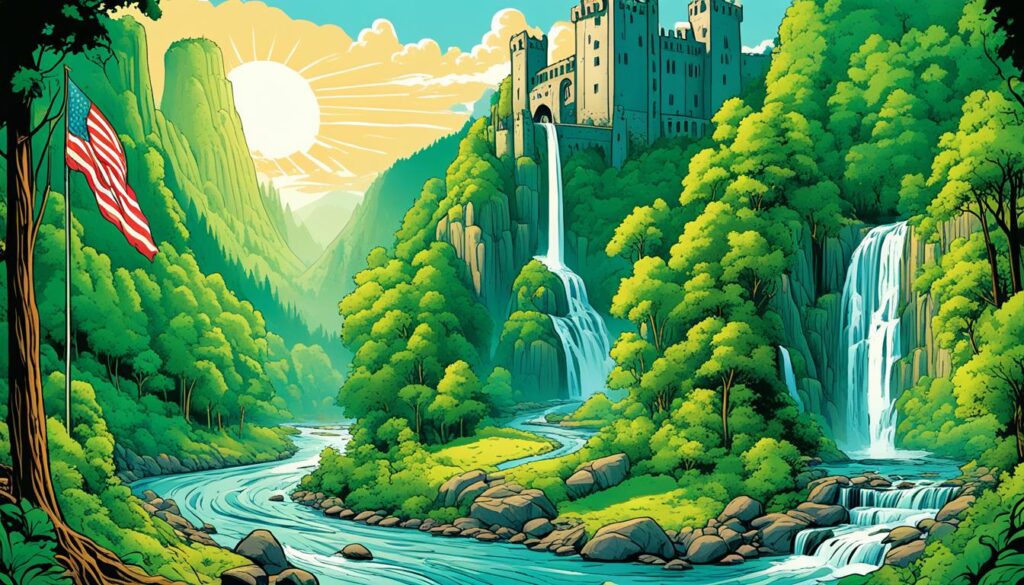
“The Legend of Zelda: Ocarina Of Time’s soundtrack is a true masterpiece. It captures the essence of the game and adds an extra layer of immersion for players.” – GameCritics.com
The game features hits like “Title Theme,” “Ganondorf Battle,” “Horse Race,” and “Staff Roll Credits.” These tracks smoothly mix with the game’s scenes. They lift the experience whether you’re exploring, fighting, or figuring out puzzles.
The Legend of Zelda: Ocarina Of Time is often called the best game ever. Its music is a big reason for its lasting success. On November 21st, 2023, it marked its 25th year since the launch in Japan. This milestone proves it’s a timeless classic.
Ocarina Songs in The Legend of Zelda: Ocarina Of Time
| Ranking | Ocarina Song |
|---|---|
| 13 | Scarecrow’s Song |
| 12 | Bolero of Fire |
| 11 | Minuet of Forest |
| 10 | Requiem of Spirit |
| 9 | Serenade of Water |
| 8 | Nocturne of Shadow |
| 7 | Saria’s Song |
| 6 | The Song of Storms |
The ocarina songs have carved a special place in fans’ hearts. Each song brings out a distinct feeling and is key to the action. Their tunes have left a lasting memory for players everywhere.
Metal Gear Solid 2: Sons Of Liberty (PlayStation 2)
Metal Gear Solid 2: Sons Of Liberty came out in November 2001 on PlayStation 2. It went beyond in terms of story and game style. This was thanks to a captivating plot, stealth action, and an immersive soundtrack by Harry Gregson-Williams.
The second installment of the Metal Gear Solid series, Sons Of Liberty didn’t just follow in the first’s success. It further defined its place as a top choice in gaming. The game’s movie-like feel needed an atmospheric music score, which Gregson-Williams delivered with help from Rika Muranaka and Konami’s team. They crafted a soundtrack that perfectly fit the intense action and emotional scenes.
The soundtrack of Metal Gear Solid 2 was a mix of orchestral pieces, choir music, and other styles like breakbeat and jazz. This mix made the playing experience even more intense. It also highlighted the game’s key themes of espionage, betrayal, and political drama.
Harry Gregson-Williams’ score for Metal Gear Solid 2 made the game feel like a suspense movie. It pulled players into the spy and action world. The music deepened the game’s emotional side and improved the gaming thrill.
Gregson-Williams worked closely with the Konami team to create a detailed and rich score. They even used live recordings from the New York Philharmonic and Metropolitan orchestras. This live touch enhanced the music’s quality and feeling.
Gregson-Williams produced about 14-16 tracks, each around three minutes long, for Metal Gear Solid 2. This count doesn’t include the nine-minute piece made for the E3 demo. The music, combined with additional tracks by Norihiko Hibino, made the game’s sound world complete and immersive.
Metal Gear Solid 2’s legacy lives on, especially through its remarkable music. The bold soundtrack, by Harry Gregson-Williams, showcases the ability of music to tell stories and make games more captivating.
Outrun (Arcade)
Outrun hit the scene in 1986, grabbing everyone’s attention with its exciting races and beautiful design. It’s also remembered for its amazing sound. The music, made by Hiroshi Kawaguchi, mixes jazz, rock, and tropical sounds to make the game more immersive.
One big thing that made Outrun special was giving players four themes to race through Europe. This let players choose how their game looked and felt.
The game’s music really fits the vibe, from calm beach tunes to lively beats. It helps the game feel like a real adventure.
In the game, you could pick from three songs to play on your ‘car radio.’ The songs, like “Passing Breeze,” became famous with the game itself.
Outrun was a big deal. It was the first to let players pick their own driving music. It also made the most money in arcades around the world in 1987.
In September 1986, Outrun arrived, and in no time, it was a hit in Japan. By 1987, it was the best arcade game in Japan and North America. In the UK, it also held the top spot for months.
Outrun’s special mix of music and gameplay made it a classic. Even now, its influence is still seen in games. It shows how great music and a fun game can last a long time.
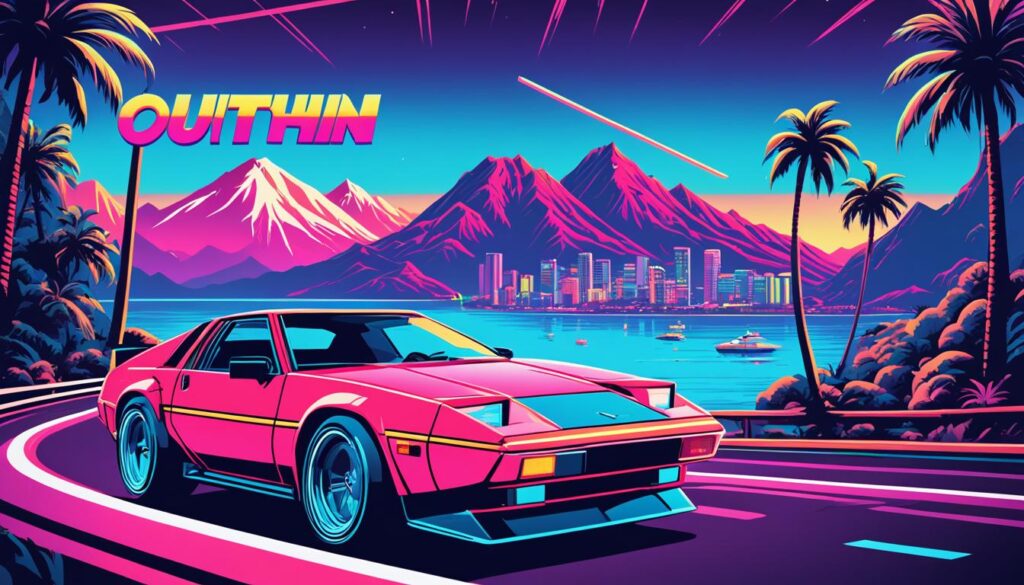
The Revenge of Shinobi (Sega Mega Drive)
Released in 1989, Yuzo Koshiro’s music for The Revenge of Shinobi shows his expertise. He was not just a composer but also a programmer and influencer. The game itself is a fresh take on Sega’s hit Shinobi, made for fun at home. Koshiro’s music amps up the excitement of its ninja fights perfectly.
Koshiro infused the game with energetic beats from Black and house music, fitting its fast action. He also added in sounds from traditional Japanese music. This mix of old and new suited the ninja world of the game well.
With The Revenge of Shinobi, Koshiro proved the Mega Drive could create amazing sounds. He overcame the system’s limits to create music that still amazes fans today.
Its vinyl release by Data Discs grabbed attention, showing off early game music’s charm. It drew in fans and collectors, proving the music’s lasting value.
The music in The Revenge of Shinobi started the trend of video game soundtracks being recognized as art. This game’s success helped shine a light on video game music’s importance.
Albums like The Super Shinobi & Works highlighted Koshiro’s wide range. They included music for various games, showcasing his big role in the industry.
Even today, The Revenge of Shinobi’s soundtrack is celebrated. One fan even called it the best music on the Genesis. Its influence on future game music is huge.
| Product Details | Additional Information |
|---|---|
| Artist | Yuzo Koshiro |
| Format | Vinyl |
| Game Title | The Revenge of Shinobi |
| Record Label | Data Discs |
| Type of Music | Original Soundtrack |
| Music Category | Soundtrack, Video Game Music, Video Game Soundtrack |
| Price Range | $25 – $50 |
Many games are known for their music, but The Revenge of Shinobi holds a special place. Its soundtrack remains a key part of its success, making it a gaming classic.
Space Channel 5 (Sega Dreamcast)
Space Channel 5 hit Japan’s Dreamcast market in December 1999. It was loved by fans of rhythm action games. This game, created by Tetsuya Mizuguchi and published by SEGA, launched before Guitar Hero and Rock Band.
The game follows Ulala, a news reporter, in dance battles against aliens. Players must copy the aliens’ moves and sounds to defeat them. This unique gameplay makes it both fun and challenging.
The game stands out for its amazing music. Composers Naofumi Hataya and Kenichi Totoi mixed big band with spy, Latin, and jazz sounds. These catchy tunes make the game feel alive, adding to its fun factor.
Mizuguchi designed Space Channel 5 to captivate gamers and music lovers alike. A team of 20, balanced between industry veterans and fresh talent, made it. The process lasted nearly two years, growing from a 10-member team to 27.
The game’s star, Ulala, moves were motion captured by Japanese dancer Nazu Nahoko. This made Ulala’s dancing look and feel authentic.
It achieved both critical acclaim and commercial success. Its attention to detail in gameplay and music earned it fans worldwide. Notably, it was adored by owners of the Dreamcast console.
Space Channel 5’s sequel, “Space Channel 5: Part 2,” expanded the adventure. It saw releases across multiple platforms over two years. Part 2 featured new levels and challenges, like musical battles and photo poses.
For the 20th anniversary, SEGA released a special edition soundtrack. It includes 47 tracks from the game, along with a VR Edition. This edition adds new songs and comments from the game’s creators.
Customer Review
“Space Channel 5 is a fantastic game that perfectly combines rhythm and action. The music is catchy, and the gameplay is addictive. It’s a must-play for any Dreamcast owner!” – 4/5 stars
Space Channel 5, though niche, made a big impact. Its gameplay and music made it a cult classic in rhythm-action games. Fans still love it for its unique style.
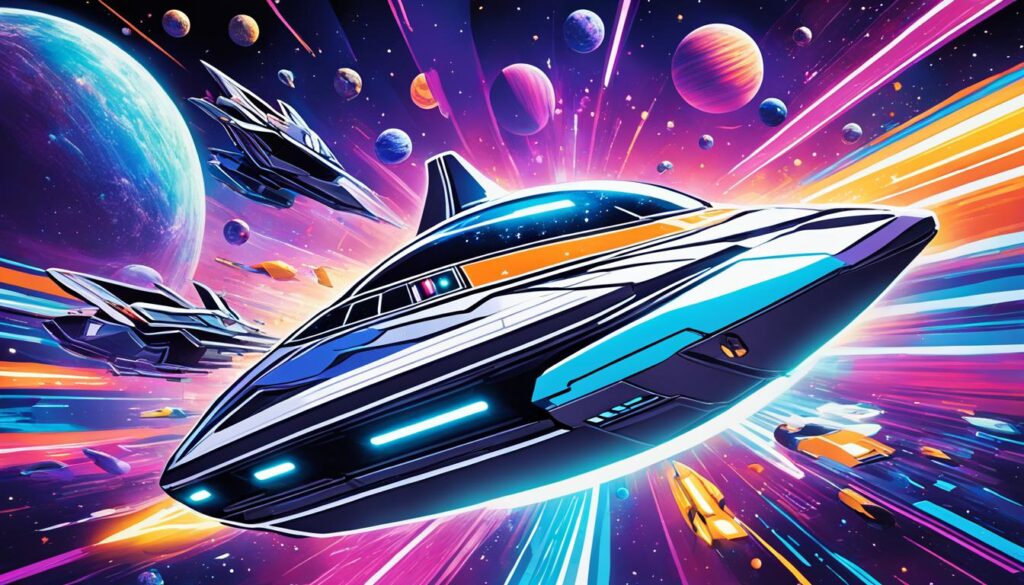
Killer7 (Nintendo Gamecube/PlayStation 2)
Killer7 is a game on Nintendo Gamecube and PlayStation 2 known for its unique style and story. Its music, done by Masafumi Takada and Jun Fukuda, is just as special. They mix Japanese flute, trance, jazz, and industrial music to fit the game’s vibe perfectly.
The game’s music stands out. It has its own style and songs that stick with players. From spooky tunes to lively music, every song makes the game better.
The game launched on different dates worldwide. It hit Japan on June 9, 2005, North America on July 5, 2005, and PAL regions on July 15, 2005. A version for Windows came out later, on November 15, 2018, sharing the beautiful music with more people.
Killer7’s not just about the music. Its gameplay is as creative. It mixes shooter elements with on-rails movement, making a unique way to play. Players face off against Heaven Smiles to get special items.
Finishing the game offers new modes like Killer8 and Hopper7. These modes let players dive back in, seeing the game in new ways, while enjoying the amazing music.
The game’s story takes place in a different Earth. It follows the killer7 group and their leader, Harman Smith. Each group member has their own skills and stories, making the game deeper and more interesting.
Masafumi Takada and Jun Fukuda’s work on the Killer7 music is truly amazing. It mixes different music types, unforgettable tunes, and a feel that’s perfect for the game. Their effort creates a music experience that fits the game’s look and story perfectly.
Silent Hill 3 (PlayStation 2)
Akira Yamaoka, the mastermind behind the music in Silent Hill, made the eerie soundtrack for Silent Hill 3. This game, launched on July 7, 2003, mixes industrial, alternative rock, and ambient tunes to draw players into a world of horror.
The album, *Silent Hill 3 Original Soundtracks*, contains 26 tracks that perfectly fit the game’s mood. Yamaoka, together with Mary Elizabeth McGlynn and Joe Romersa on vocals, leads listeners through the scary corners of Silent Hill.
The album is highlighted by songs like “Lost Carol,” “You’re Not Here,” and “Letter – From the Lost Days.” Yet, it’s worth mentioning that the European version lacks the track “Rain of Brass Petals – Three Voices Edit.”

In North America, along with the PlayStation 2 game, you’d get the Silent Hill 3 Official Soundtrack. This made the gaming experience even better for players.
Making fans happy, Silent Hill 3’s soundtrack got a vinyl release on August 18, 2021. Mondo helped distribute it, and Ashley Swidowski designed the cover art. This vinyl lets fans enjoy the spooky tunes in a new format.
Silent Hill 3 is famous for its dark music, and this soundtrack adds to its eerie vibe. The vocal songs and atmospheric sounds heighten the feeling of suspense in the game.
Key Statistics:
| Release Date | July 7, 2003 |
|---|---|
| Length of the Album | 1 hour, 16 minutes, and 18 seconds |
| Composer | Akira Yamaoka |
| Vocals | Mary Elizabeth McGlynn and Joe Romersa |
| Total Tracks | 26 |
Feel the creepiness and mood of Silent Hill 3’s soundtrack with a 2xLP set. Produced by Black Screen Records, this vinyl takes you on a scary and nostalgic trip to Silent Hill’s world.
Stock for this vinyl is limited, so buy yours fast. Shipping dates are estimated on the product page. Orders ship within 7-14 business days once everything’s in stock.
With Black Screen Records, you get the real deal. They’re licensed to make sure you get quality. They ship worldwide from Cologne, Germany, so Silent Hill fans everywhere can enjoy the music.
You can change or cancel your order anytime. Need help? Their English and German speaking customer service is ready to assist you.
Chrono Trigger (Super Nintendo Entertainment System)
It launched on March 11, 1995, in Japan. North America got it on August 11, 1995. Chrono Trigger was a quick hit, charming gamers. It was created by Square, an RPG that has stayed close to the hearts of fans.
A major highlight of Chrono Trigger is its amazing music. Yasunori Mitsuda and Nobuo Uematsu led its creation. The tunes stand among the best in gaming, showing the skill of its makers.
Mitsuda and Uematsu created tunes that felt right for Chrono Trigger. They mixed their own styles to craft touching melodies. The soundtrack is not only catchy but draws players deep into the game.
The game’s music ranges from grand orchestra pieces to gentle piano tracks. Each tune is placed to enrich both story and gameplay, making every moment more engaging.
Chrono Trigger was successful far after its SNES debut. It appeared on different consoles, like the PlayStation and Nintendo DS. It even reached mobile devices and computer systems.
This game has many different endings, adding to its replay value. Players can see twelve unique conclusions, and there’s a secret one too. This deepens the experience for anyone playing the game.
It also introduced the New Game Plus feature, changing how games were played. This let players carry over their progress to a new game. It’s a feature that some still enjoy today in modern games.
The game is remembered for its great gameplay and story, but its music is special too. The work by Uematsu and Mitsuda stays with fans. It illustrates the power of music in games.
Streets of Rage 2 (Sega Mega Drive)
Streets of Rage 2 is very known for its music. The game was released in 1992 by Mars Colony Music. It was a hit because of its exciting fights and amazing music.
The music was created by Yuzo Koshiro when he was just 25. His mix of electronic, techno, jazz, and rock made the game special. The music added to the feeling of the game’s tough city setting.
Koshiro worked on most of the music himself. Another composer, Motohiro Kawashima, also added three songs. Koshiro used a special computer and music language. This made the music different from others at that time.
The music in Streets of Rage 2 sounds like the scene in nightclubs back then. People say it reminds them of famous DJs and music from the past. It gave the game a cool, real-life vibe.
| Vinyl Release Details: | Soundtrack CD Details: |
|---|---|
|
|
The music in Streets of Rage 2 means a lot to many gamers. It brings back memories of the game. People feel connected to it.
DJs and music makers still love the Streets of Rage 2 music. They play it at dance parties. This shows how much impact Koshiro’s music still has today.
See the image below for a glimpse into the intensity and energy of Streets of Rage 2:
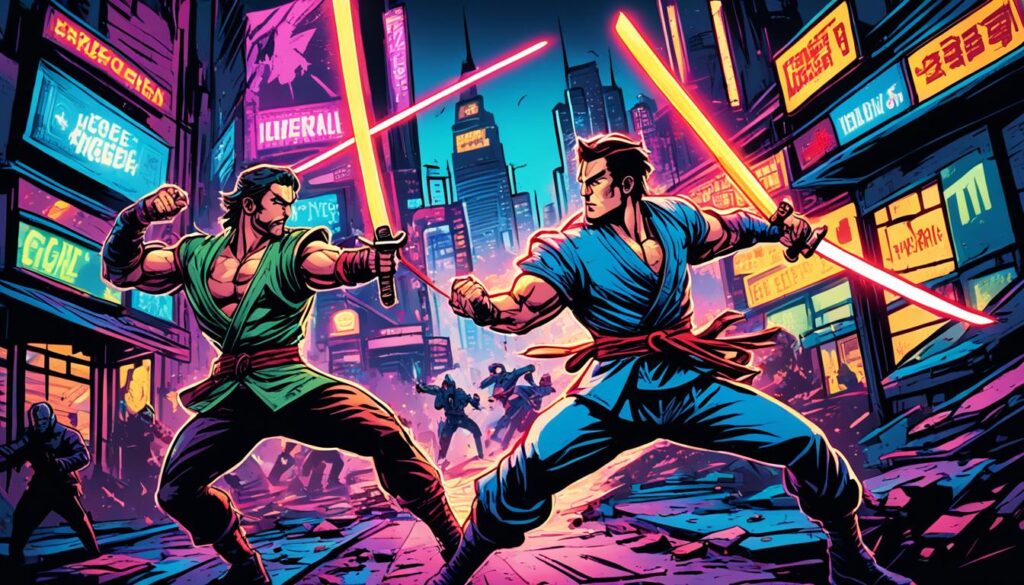
Mega Man 2 (Nintendo Entertainment System)
Mega Man 2 is a famous sequel that made a big impact. It launched in Japan in December 1988 for the NES. This thrilling game follows Mega Man fighting Dr. Wily and his army.
It’s known for its exciting gameplay and amazing music. Takashi Tateishi composed the music, making the game legendary.
Players love the game’s music from the start. Each stage’s music fits perfectly, making the experience better.
Tateishi showed his skill by creating memorable songs with limited tools. The music plays a big role in the game’s success.
The battle with Dr. Wily stands out because of its music. It’s thrilling and unforgettable, showing Tateishi’s true talent.
Mega Man 2 is a best-seller in the series, selling over 1.51 million copies. The game’s music is still celebrated today.
Now, as it turns 35, Mega Man 2 is a key part of gaming history. Its music, by Tateishi, is remembered for its impact on the game.
We Love Katamari (PlayStation 2)
We Love Katamari is a sequel to Katamari Damacy. It gives players a unique and fun gaming experience. The game, released in 2005, comes with an amazing game soundtrack.
This game got nominated for a “best audio” award. It mixes different music genres like Japanese pop, rock, and more. The music makes the game’s world more fun and alive.
“We Love Katamari” honors Japanese artists like Pizzicato Five. Their songs make the game’s atmosphere joyful and enjoyable.
In this game, you roll up items to make a big ball, a Katamari. It has big maps and many missions. Players can have lots of fun being creative and completing tasks.
The game is easy to control. For example, you use the square button to make the Prince go faster. Completing missions gets players closer to their final reward.
There’s a special stage where you catch the Sun. It’s a big challenge in the game. As you play, you see new planets appear, showing your progress.
The King and the Black Dog fan show how well you’re doing. This adds to the game’s story and experience.
If you love great music along with fun games, We Love Katamari is perfect. Get ready to be part of a joyful, whimsical world. Let the game’s music and gameplay bring you joy.
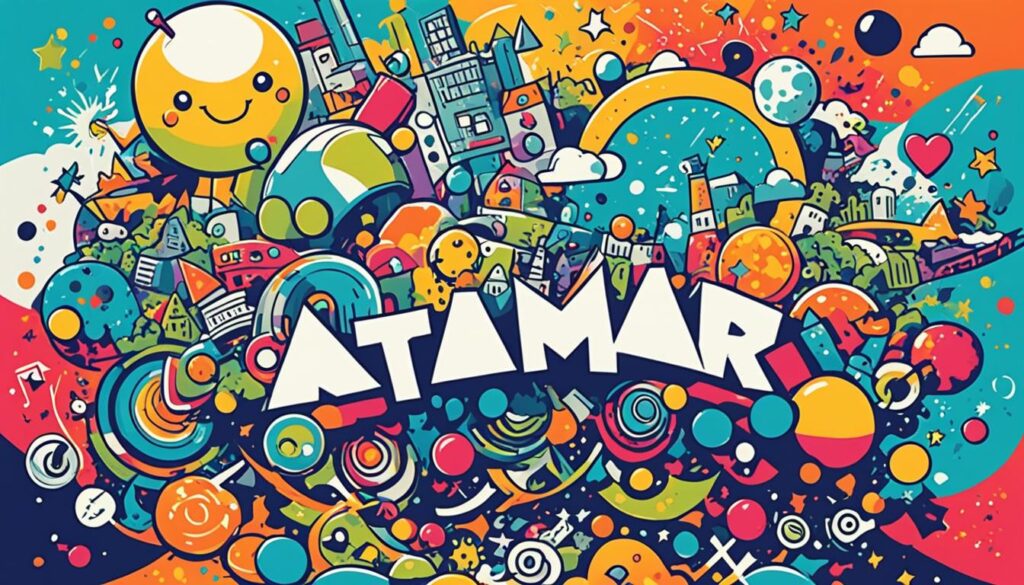
Conclusion
Japanese game music has made a big impact on the gaming world. Think of the catchy tunes from Super Mario or the chilling music in Silent Hill. These tunes made our gaming moments extra special. They are a big reason why many games are so loved.
Anime has also helped shine a light on Japanese music in recent years. The Chainsaw Man anime, for instance, featured many great songs by famous Japanese artists in 2022. Artists like TK, 米津玄師 Kenshi Yonezu, ZUTOMAYO, and EGOIST performed music for the show. This shows how Japanese game music has grown to be among the finest in the world.
We’ve looked at 12 great game soundtracks from Japan. But, let’s not forget, there are many, many more. The A-Train 5 soundtrack mixes classical music with Hollywood’s best. It brings out feelings of love, just like music from old Hollywood films. It shows the variety and depth of Japanese game music.
The music in games like Metal Gear Solid 2 and Super Mario 64 has also left a mark. They are key parts of Japan’s game music scene. These works, along with many others, show the skill and creativity in Japanese game music.
In the end, Japanese game music has a special place in gamers’ hearts around the world. From the grand symphonies in A-Train 5 to the exciting Metal Gear Solid 2 themes, this music is part of what makes games great. As time goes on, the top Japanese game music will keep inspiring and delighting gamers everywhere.
FAQ
Why is Japanese game music considered the best?
Japanese game music is the top choice in the gaming world. It’s famous for its unique presence in the gaming culture. It creates unforgettable soundtracks, making games better. This is why it’s revered by gamers around the globe.
Who composed the soundtrack for Super Mario World?
Koji Kondo created the iconic music for Super Mario World.
Who composed the soundtrack for The Legend of Zelda: Ocarina Of Time?
The brilliant Koji Kondo also composed the music for The Legend of Zelda: Ocarina Of Time.
Who composed the soundtrack for Metal Gear Solid 2: Sons Of Liberty?
The amazing Harry Gregson-Williams made the music for Metal Gear Solid 2: Sons Of Liberty.
Who composed the soundtrack for Outrun?
Hiroshi Kawaguchi crafted the energetic music for Outrun.
Who composed the soundtrack for The Revenge of Shinobi?
The intense music of The Revenge of Shinobi was created by Yuzo Koshiro.
Who composed the soundtrack for Space Channel 5?
Naofumi Hataya and Kenichi Totoi are behind the groovy tunes of Space Channel 5.
Who composed the soundtrack for Killer7?
Masafumi Takada and Jun Fukuda put together the haunting music for Killer7.
Who composed the soundtrack for Silent Hill 3?
The eerie music of Silent Hill 3 came from the talented Akira Yamaoka.
Who composed the soundtrack for Chrono Trigger?
Nobuo Uematsu and Yasunori Matsuda created the mesmerizing Chrono Trigger music.
Who composed the soundtrack for Streets of Rage 2?
Yuzo Koshiro composed the unforgettable music of Streets of Rage 2.
Who composed the soundtrack for Mega Man 2?
Takashi Tateishi is the mastermind behind the music of Mega Man 2.
Who composed the soundtrack for We Love Katamari?
Various dynamic artists have contributed to the eclectic soundtrack of We Love Katamari. They mixed Japanese pop, rock, techno, and more.
Can you give a conclusion about the best Japanese game music?
Japanese game music stands out in gaming, leaving an unforgettable impact. The music of Super Mario World, The Legend of Zelda: Ocarina Of Time, and many others shines. They show the amazing creativity and talent of game soundtracks, making games truly immersive.
Source Links
- https://theculturetrip.com/asia/japan/articles/12-of-the-greatest-japanese-video-game-music-composers
- https://blog.audionetwork.com/the-edit/music/japanese-video-game-composers
- https://theculturetrip.com/europe/united-kingdom/articles/12-of-the-best-retro-japanese-video-game-soundtracks
- https://www.mariowiki.com/Nintendo_Super_Famicom_Game_Music
- https://en.wikipedia.org/wiki/Super_Mario_World
- https://sabukaru.online/articles/mirrors-edge-an-ecstasy-ride-on-rooftops-pek7j-fd983-6ywmw
- https://www.nintendolife.com/features/zelda-ocarina-of-time-every-ocarina-song-ranked-from-worst-to-best
- https://www.gamedeveloper.com/audio/creating-the-iconic-soundtrack-for-metal-gear-solid-2-sons-of-liberty
- https://www.ebay.com/itm/134658940063
- https://classicalgaming.wordpress.com/2011/03/22/research-in-game-music-an-example-of-why-wikipedia-is-a-terrible-research-vehicle/
- https://en.wikipedia.org/wiki/Out_Run
- https://www.kotaku.com.au/2020/09/revenge-of-shinobi-fused-dance-beats-with-ninjas/
- https://materia.store/products/the-revenge-of-shinobi-1989-original-soundtrack-yuzo-koshiro-1xlp-vinyl-record
- https://shmups.system11.org/viewtopic.php?t=4784
- https://en.wikipedia.org/wiki/Space_Channel_5
- https://en.wikipedia.org/wiki/Space_Channel_5:_Part_2
- https://ruliplus.play-asia.com/space-channel-5-20th-anniversary-gyungyun-selection/13/70d5w7
- https://en.wikipedia.org/wiki/Killer7
- https://gamefaqs.gamespot.com/boards/915781-gamecube/67725308
- https://silenthill.fandom.com/wiki/Silent_Hill_3_Original_Soundtracks
- https://gamerant.com/silent-hill-games-best-music/
- https://blackscreenrecords.com/products/silent-hill-3
- https://rumble.com/v2nd22i-chrono-trigger-ost-ruined-world.html
- https://en.wikipedia.org/wiki/Chrono_Trigger
- https://beardedgentlemenmusic.com/2016/02/26/soundtracks-to-your-life-shinobi-iii-and-super-hang-on-review-and-preview-of-streets-of-rage-2/
- https://www.sega-16.com/2006/07/hands-on-streets-of-rage-2-original-soundtrack/
- https://www.vice.com/en/article/7bdydb/an-expert-agrees-the-streets-of-rage-2-soundtrack-still-sounds-amazing-today-213
- https://www.inverse.com/gaming/mega-man-2-anniversary-music-composer-interview
- https://en.wikipedia.org/wiki/Mega_Man_2
- https://en.wikipedia.org/wiki/Music_of_the_Katamari_Damacy_series
- https://gamefaqs.gamespot.com/ps2/921111-we-love-katamari/faqs/37784
- https://jrocknews.com/2023/01/top-25-anime-opening-and-ending-songs-2022.html
- https://www.greatestgamemusic.com/soundtracks/a-train-5-soundtrack/
- https://www.factmag.com/2015/04/28/the-100-greatest-video-game-soundtracks-best-ost/
